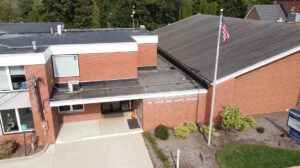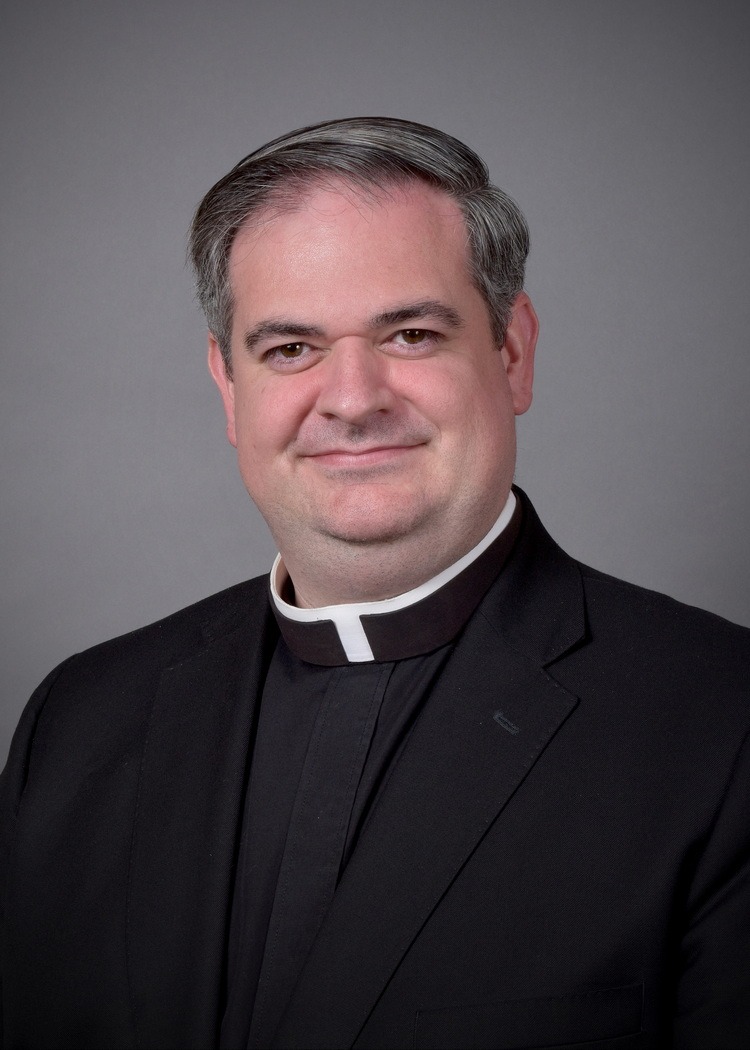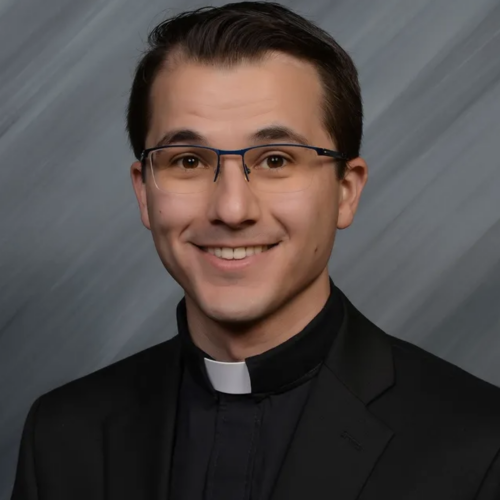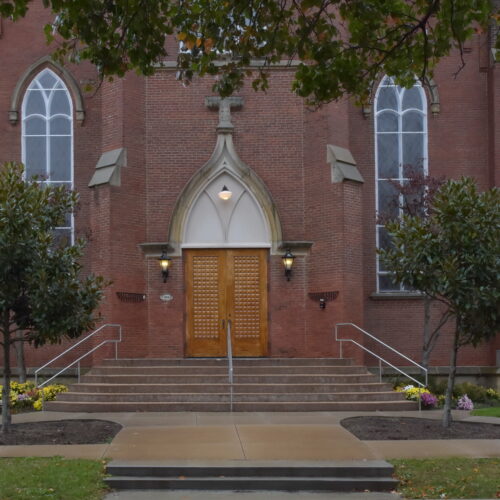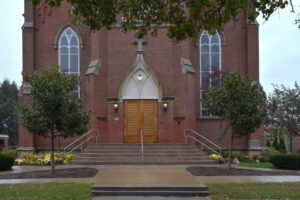The first Mass to be held in what is today Canal Fulton was celebrated by Dominican Father Edward Fenwick–the eventual Bishop of Cincinnati who became know as the “Apostle of Ohio”–in the home of Matthew Patton. Patton was one of a small group of Catholics who moved to the area to work on the Ohio & Erie Canal.
Dominicans continued to minister to the community until 1830, when the pastor of St. John the Baptist in Canton began serving the area. The community built a temporary wooden church in 1831, which was used until 1844 when they began construction on a new frame church, dedicated by Archbishop John Purcell of Cincinnati in 1847. The parish received its first resident pastor in 1862, and shortly afterward purchased 12 acres of land for planned expansions, including the construction of a school. The parish built a new brick church building to accommodate their growing congregation, dedicated in 1869.
The church was destroyed in a fire on June 13, 1947, when the steeple was struck by lightning. Thankfully the fire was contained in the church and did not spread to the surrounding homes; the marble altar, donated by Phil Bernower in the early 1900s, along with the consecrated hosts and the original cornerstone were all recovered.
While the church was rebuilt, the parish’s 158 families celebrated Mass in the parish school’s hall. The first Mass in the restored church—built with fireproof lumber and with a lightning rod steeple—was celebrated in 1948. At around the same time, the school was also expanded and Notre Dame Sisters were brought in to teach the students, until they left in 1975.
The parish dedicated significant resources to support the school, serving students from kindergarten through eighth grade. The parish maintains several community and outreach ministries, including an annual mission trip to Kentucky, a women’s crafting group and a Knights of Columbus council.
Saints Philip and James (the Lesser), two of the original Apostles of Jesus, are often celebrated together thanks to their shared feast day and the fact that their relics were interred together in the Church of the Holy Apostles in Rome in 560 A.D.
Description from The March of the Eucharist, 2nd edition (2025) published by The Catholic Echo


